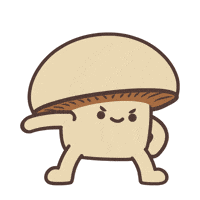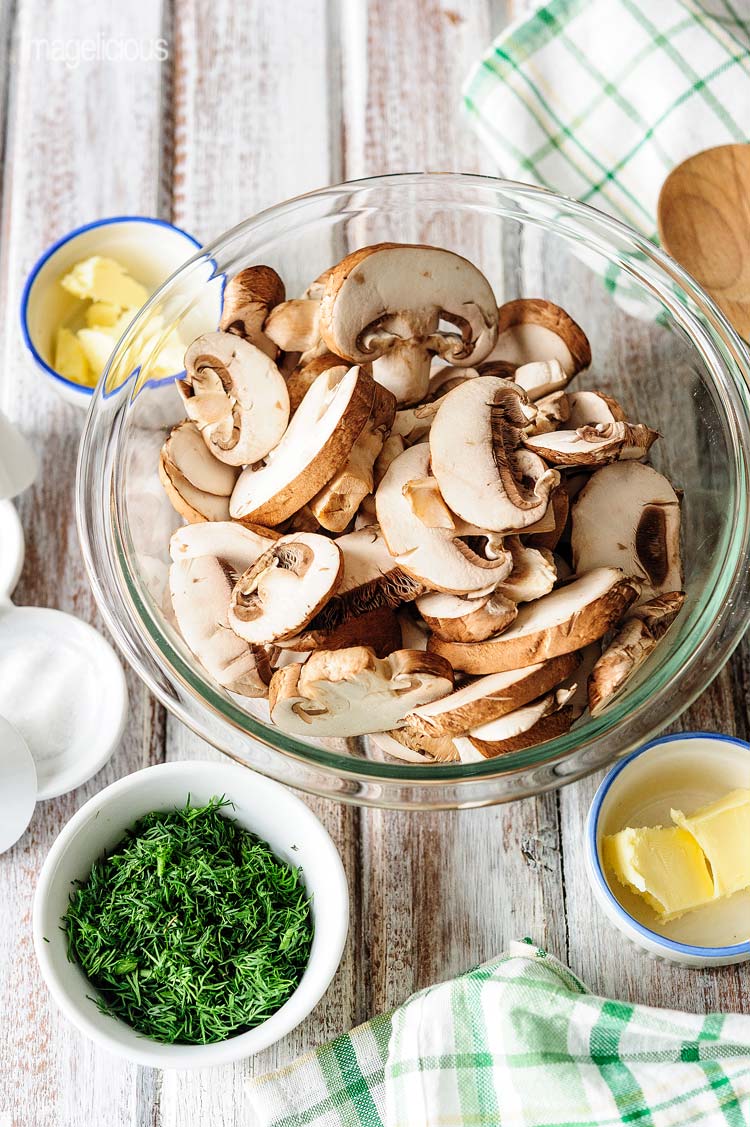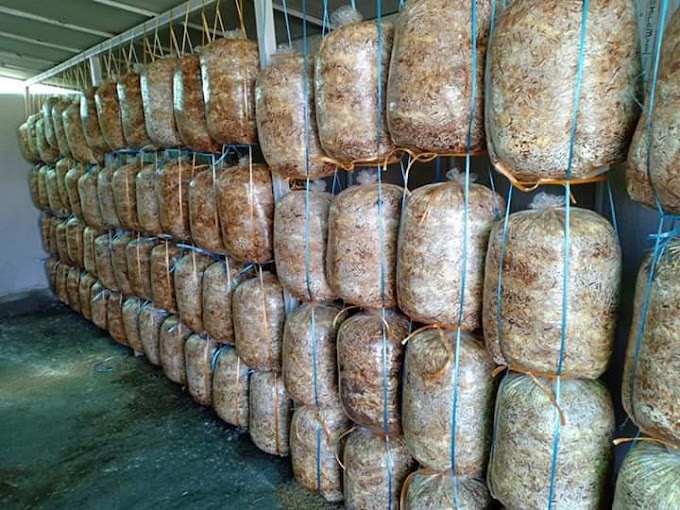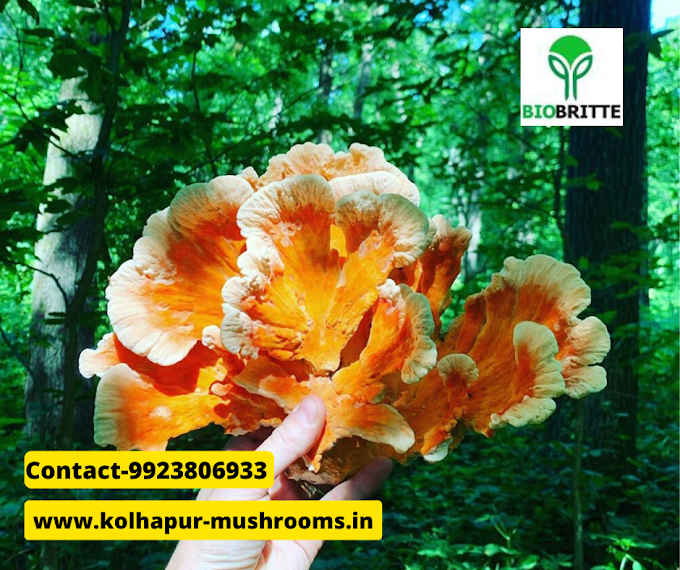Cooking with Mushroom
Cooking with mushrooms offers a versatile and delicious way to incorporate these flavorful fungi into your meals. Here are some popular cooking methods and recipes featuring mushrooms:
1. Tips for selecting and storing mushrooms
Selecting and storing mushrooms properly is essential to ensure their freshness, flavor, and safety. Here are some tips:
Selecting Mushrooms:
1. Appearance: Choose mushrooms that are firm, plump, and free from blemishes, bruises, or mold. Avoid mushrooms with slimy or wrinkled caps, as these may be signs of spoilage.
2. Color: Look for mushrooms with vibrant colors that are characteristic of their variety. For example, white mushrooms should be pale white, while cremini mushrooms should have a light to medium brown color.
3. Texture: The texture of mushrooms should be firm but slightly springy to the touch. Mushrooms should not feel mushy or overly soft, as this may indicate deterioration.
4. Smell: Fresh mushrooms should have a mild, earthy aroma. Avoid mushrooms with strong or unpleasant odors, as this may indicate spoilage or decay.
Storing Mushrooms:
1. Refrigeration: Store fresh mushrooms in the refrigerator to maintain their freshness and prolong their shelf life. Place them in a paper bag or a breathable container to allow air circulation and prevent moisture buildup.
2. Moisture Control: Avoid washing mushrooms until you are ready to use them, as excess moisture can promote spoilage. If the mushrooms are dirty, gently brush off any soil or debris with a soft brush or paper towel.
3. Storage Duration: Fresh mushrooms can typically be stored in the refrigerator for up to 5-7 days, depending on their freshness at the time of purchase. Use mushrooms as soon as possible for the best flavor and texture.
4. Avoid Plastic Bags: Avoid storing mushrooms in plastic bags or airtight containers, as these can trap moisture and promote mold growth. Opt for breathable containers or paper bags instead.
5. Freezing: If you have excess mushrooms that you cannot use within a few days, consider freezing them for longer-term storage. Clean and slice the mushrooms, then spread them in a single layer on a baking sheet and freeze until firm. Transfer the frozen mushrooms to a freezer-safe bag or container for storage.
2. Cooking techniques and recipes
Mushrooms are incredibly versatile and can be prepared using various cooking techniques to highlight their unique flavor and texture. Here are some popular cooking techniques and recipes for mushrooms:
1. Sautéing:
- Technique: Sautéing mushrooms involves cooking them in a skillet with a small amount of oil or butter over medium-high heat until they are tender and golden brown.
- Recipe: Garlic Butter Mushrooms - Heat butter in a skillet, add minced garlic and sliced mushrooms, and sauté until the mushrooms are golden brown. Season with salt, pepper, and fresh herbs like thyme or parsley.
2. Roasting:
- Technique: Roasting mushrooms involves baking them in the oven until they are tender and caramelized. This technique brings out the natural sweetness of the mushrooms and intensifies their flavor.
- Recipe: Balsamic Roasted Mushrooms - Toss mushrooms with olive oil, balsamic vinegar, minced garlic, salt, and pepper. Spread them on a baking sheet and roast in the oven until caramelized and tender.
3. Grilling:
- Technique: Grilling mushrooms adds a smoky flavor and charred exterior to the mushrooms. They can be grilled on skewers, in a grill basket, or directly on the grill grates.
- Recipe: Grilled Portobello Mushrooms - Marinate portobello mushroom caps in a mixture of olive oil, balsamic vinegar, garlic, and herbs. Grill the mushrooms until they are tender and grill marks appear.
4. Stuffing:
- Technique: Stuffing mushrooms involves filling mushroom caps with a savory filling and baking them until the filling is golden brown and the mushrooms are tender.
- Recipe: Stuffed Mushrooms - Remove the stems from button mushrooms and fill the caps with a mixture of cream cheese, breadcrumbs, Parmesan cheese, garlic, and herbs. Bake until the mushrooms are cooked through and the filling is golden brown.
5. Stir-Frying:
- Technique: Stir-frying mushrooms involves cooking them quickly in a hot pan with other ingredients such as vegetables, tofu, or meat. This technique preserves the mushrooms' texture and allows them to absorb the flavors of the other ingredients.
- Recipe: Mushroom Stir-Fry - Stir-fry sliced mushrooms with bell peppers, onions, broccoli, and tofu in a wok with a flavorful sauce made from soy sauce, ginger, garlic, and sesame oil.
6. Soups and Stews:
- Technique: Mushrooms add depth and richness to soups and stews. They can be sliced, diced, or left whole and simmered with other ingredients to create hearty and flavorful dishes.
- Recipe: Creamy Mushroom Soup - Sauté chopped onions, celery, and garlic in butter until softened. Add sliced mushrooms, chicken or vegetable broth, and thyme, and simmer until the mushrooms are tender. Blend the soup until smooth, stir in cream, and season with salt and pepper.
3. Combining mushrooms with other ingredients
Combining mushrooms with other ingredients can create delicious and flavorful dishes. Here are some popular ingredients that pair well with mushrooms:
1. Garlic: Garlic adds depth and aroma to mushrooms and enhances their flavor when sautéed together. Garlic can be minced, sliced, or crushed and added to dishes like stir-fries, pasta sauces, and roasted mushrooms.
2. Onions: Onions complement the earthy flavor of mushrooms and add sweetness and texture to dishes. Sautéed onions can be combined with mushrooms in various recipes, such as soups, stews, omelets, and risottos.
3. Herbs: Fresh or dried herbs like thyme, rosemary, parsley, and sage pair well with mushrooms and add complexity to their flavor profile. Herbs can be added to dishes during cooking or used as a garnish to enhance the overall taste and aroma.
4. Cheese: Cheese adds richness and creaminess to mushroom dishes and enhances their flavor. Varieties like Parmesan, Gruyère, goat cheese, and blue cheese can be used in recipes like stuffed mushrooms, risottos, pizzas, and gratins.
5. Cream: Cream or cream-based sauces can be used to create creamy mushroom sauces for pasta, chicken, or steak dishes. Cream adds richness and smoothness to the dish and complements the earthy flavor of mushrooms.
6. Wine: Wine adds acidity, depth, and complexity to mushroom dishes and helps deglaze the pan when sautéing mushrooms. White wine pairs well with delicate mushrooms like button or oyster mushrooms, while red wine complements heartier mushrooms like portobello or shiitake mushrooms.
7. Pasta: Mushrooms can be incorporated into pasta dishes like spaghetti carbonara, mushroom alfredo, or mushroom risotto. Pasta provides a hearty base for mushrooms and absorbs their flavor when cooked together.
8. Greens: Leafy greens like spinach, kale, arugula, or Swiss chard can be combined with mushrooms to create nutritious and flavorful dishes. Greens add color, texture, and freshness to mushroom-based recipes like salads, stir-fries, and frittatas.






